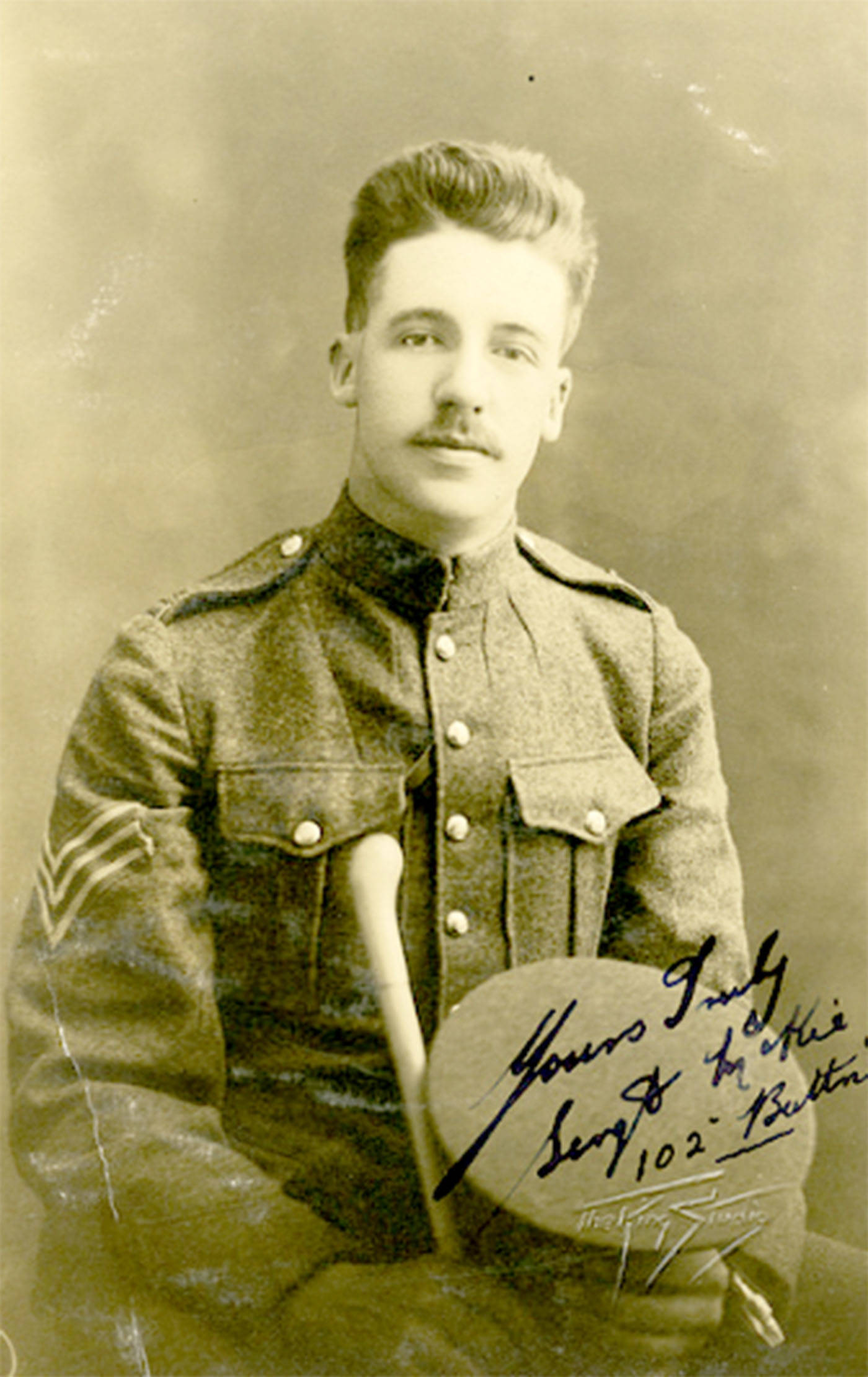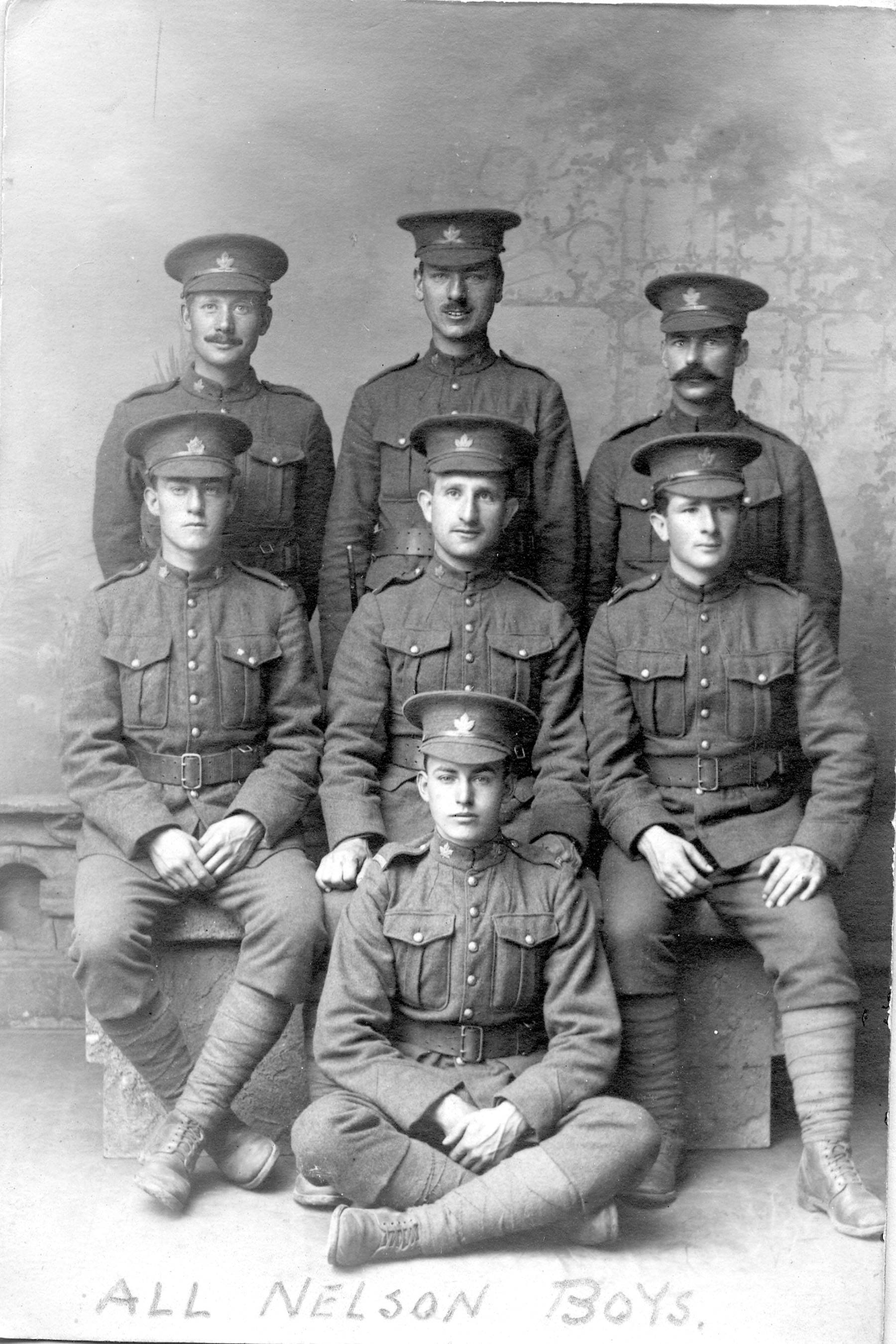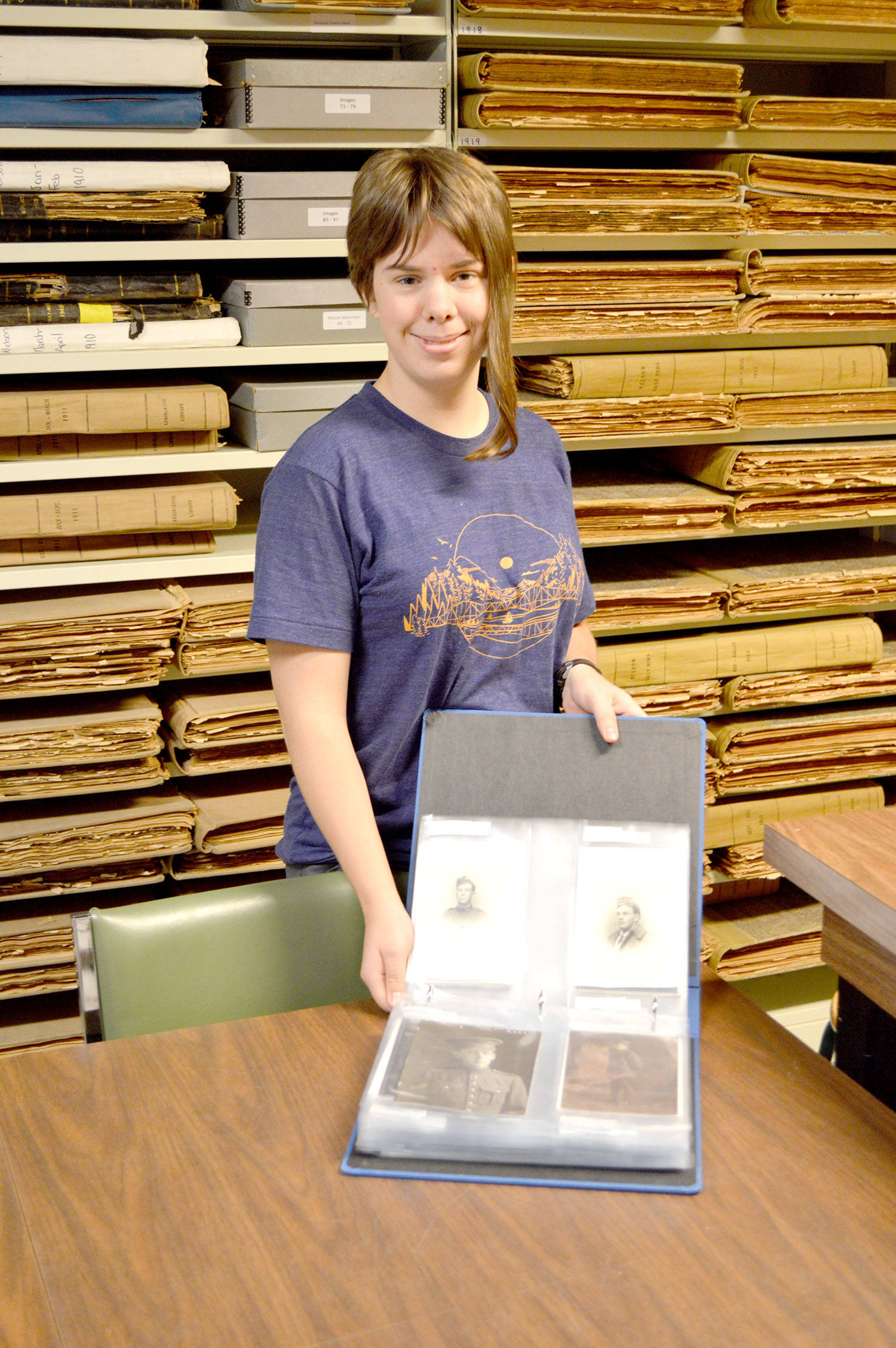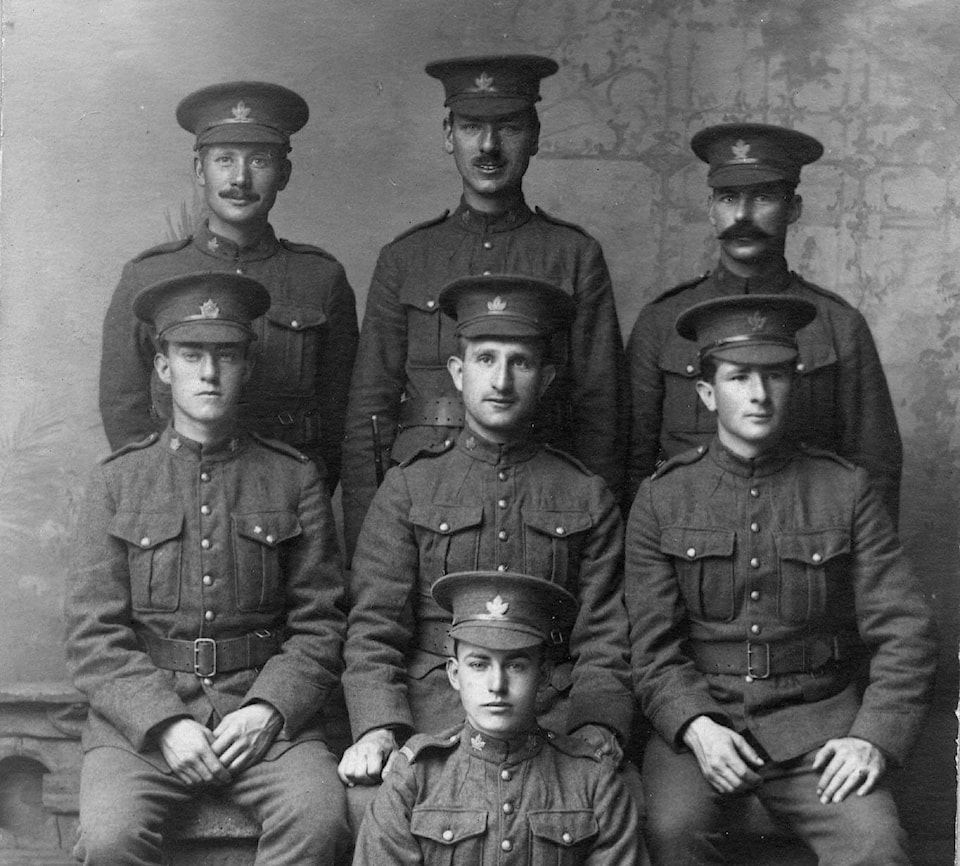During the battle of Festubert in May 1915, Nelson soldier Joseph (Eli) Statham carried his brother John Goulding to safety on his shoulders amidst explosions and machine gun fire. The pair had enlisted together six months earlier and found themselves in the thick of the First World War.
Over 100 years later, as local student researcher Tressa Ford was working on a research project for Touchstones Nelson, she came across the story of the two brothers. She’d been tasked with humanizing them, filling gaps in their chronology to keep their memories alive.
As she sorted through their papers, noting that Statham was declared killed in action seven months later near the Somme, she came across a striking fact — his brother ultimately gave his first-born daughter the middle name Festubert, to commemorate the day his life had been saved.
Goulding then lived until the age of 93, dying in 1983 after living a happy, healthy life in Victoria, Slocan and on Stanley Street in Nelson.
“I’ve always loved history and been interested in the war. I think you can understand history on a grand scale, but it’s so much more difficult to understand it on an individual scale, to get intimately involved,” Ford told the Star, after completing her summer work term.
“I was really honoured to be asked to look into these people’s stories, and I knew right away looking at the photos that it was going to be a profound experience.”
The end result of Ford’s work is called Giving Names to the Faces: First World War Kootenay Soldiers Photograph Project, and it’s all derived from a donation that was given to the museum back in the 80s. Her first job was removing the old photographs from the acidic paper where they’d been fastened inside a binder, so they could be digitized and uploaded to Flickr.
During the project, Ford worked with Touchstones’ archivist Jean-Philippe Stienne, who helped her create brief biographies for each soldier. They hope more people will eventually come out of the woodwork to give them further information about the soldiers featured.
Ford was surprised to learn about her subjects’ attitude to the war.
“I didn’t have a good opinion of the First World War before this, I don’t think anybody did, but it’s really changed my perspective about how it happened. The people going to war didn’t have a driving ideology, they just thought they were fighting for the ideals of the empire they happened to belong to,” she said.
“It’s interesting seeing the quotes in the newspapers, you can go look them up in the Touchstones archives, and on one page they’ll have somebody praising the war and the next page will have a list of who was killed that week.”
She tried hard to get into their mentality.
“The fact is most people signed up willingly. There was pressure from friends and society, of course, but it was a willing endeavour even though they had the knowledge they were heading out to the slaughterhouse. You start looking at the individual reasons why each one went, and you realize nothing in history can be simple.”
In fact, the history she learned about was overwhelmingly tragic.
“A lot of the more difficult moments came up at the beginning, when I was looking up the soldiers who didn’t survive. I’d find his name in the blue binder, see how young he looks, then I have to look at this person and know they didn’t make it out of that war,” she said.
“I learned stories of people who miraculously survived, but there were lots of people who didn’t get to live to be 90. You find yourself finding ways to try to lessen it, or make jokes, but you still have to look at these photos and confront the fact you’re finding tragedy there.”
The photos are available for viewing at flickr.com.



